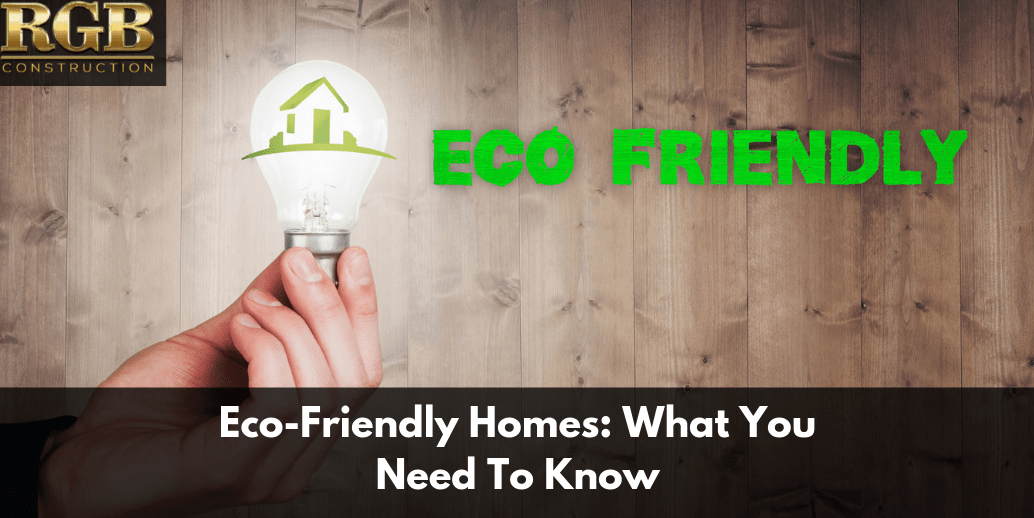The “green” movement has been running full steam, really, since the 1960s, and for good reason. It’s true, we only have one planet and no immediate prospects for relocating to another one if things go pear-shaped. This alone should be enough motivation for us to all do our part, however small, to reduce our carbon footprint, environmental damage, and wastefulness of resources.
But, at the end of the day, due to social obligations and economics, we can’t always make our decisions based on such environmental concerns. However, there’s so much more wiggle room in society for making financially-sound decisions, and an eco-friendly home can often be just as financially-sound as it can be environmentally.
Many of these measures can have a direct financial impact, such as increasing resale value of a home, garnering premium-reduction from more modern-thinking home insurance companies, and of course, saving you a bundle on utilities and maintenance, if you do them right. However, before you leap from your seat, on a mission to go one hundred percent “green”, let us talk about the various approaches, and their strengths and weaknesses. The “ideal eco-friendly home” can depend on location, not be that comfortable.
Let us take you on a tour of eco-friendliness the way only RGB Construction can. We’ve seen a thing or two over the years, and we know eco-friendly homes, as we have decades of experience working with all of these technologies.
Rainwater Storage
First, something that’s been done by farms and in the old world since time began, is rainwater storage. This can reduce the amount of water waste you produce. This, in turn, can reduce your water bill quite a bit. This is usually done through special tanks which capture filtered water and introduce it to your water heater and your regular water system, often with electronic means.
Pros
- Reduces your water waste.
- Reduces your water bill.
- May provide cleaner water depending on your location.
Cons
- If you live in a high-pollution area, this water won’t be very clean.
- This water could stagnate.
- If you live in an area with minimal rain, this doesn’t do much.
- This doesn’t reduce your sewage bill, which is the real wallet-gouger.
Solar Power
Solar power for electricity or heat can reduce your power bill, and reduces your carbon footprint significantly. Solar panels are usually attached to the roof, which if you’re heating water, still wastes some power to pump it.
Pros
- Reduces your electricity bill.
- Has less impact if you heat water this way.
- Improves home resale value.
Cons
- They’re a nuisance for roofers.
- They depend on fair weather, which only some regions can boast.
- They’re fragile.
- Solar water heaters cultivate nasty algae.
Smart Materials
Smart materials include temperature-regulating walls, sustainable building materials, and high-efficiency lighting. These all reduce the impact of power use by lowering HVAC usage, and energy consumption for lighting. They also have less impact on the environment when renewable materials are used.
Pros
- Your power bill will thank you for the smarter temperature control and better lighting approaches.
- You’re wasting less resources, and even construction waste is less nasty with sustainable materials.
Cons
- These materials are often very expensive.
- Sustainable materials aren’t as rugged as synthetics.
Food Gardens and Recycling Features
Growing your own produce can provide a healthier, cheaper, lower-footprint solution for much of your food supply. When you actually consider how much fuel and energy is burned in factory farming and food transport, it does add up. Recycling should be obvious – less waste means less landfill, and less emissions to manufacture things.
Pros
- Healthier, cheaper food.
- Less garbage and less energy waste in manufacturing.
Cons
- If you don’t enjoy gardening, this will be more misery than it’s worth.
- Gardening only works during growing seasons unless you use a hothouse – hothouse produce tends to be subpar to say the least.
- Recycling can be a hassle, depending on how your city’s sanitation handles it.
So, obviously there are a lot of ways to implement an eco-friendly home, and these are only the main things – the things done as a package when a deliberately eco-friendly home is built. You can of course, pick and choose which if any of these that work well for you. To learn more about eco-friendly homes, and other things you can do to be more green with your home, fill out our contact form or call us today!







